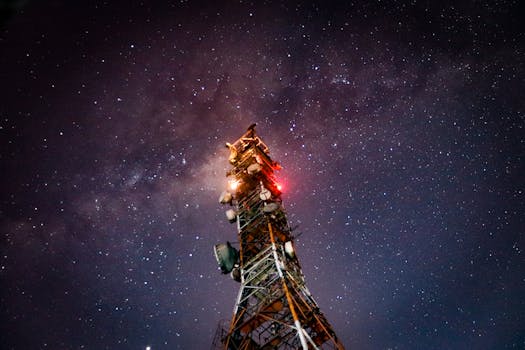
MEO Satellites: Revolutionizing Global Communication with Medium Earth Orbit Technology
MEO satellites, or Medium Earth Orbit satellites, are a type of satellite that operates in an orbit between 2,000 and 36,000 kilometers above the Earth’s surface. This unique orbit allows MEO satellites to provide global coverage while minimizing latency and signal degradation. As a result, MEO satellites are playing an increasingly important role in modern communication systems, enabling faster and more reliable data transmission across the globe.
MEO satellites have several advantages over other types of satellites, including Geostationary Orbit (GEO) satellites and Low Earth Orbit (LEO) satellites. GEO satellites, which orbit the Earth at an altitude of approximately 36,000 kilometers, are often used for broadcasting and telecommunications. However, they can experience significant latency due to the long distance between the satellite and the Earth’s surface. LEO satellites, on the other hand, orbit the Earth at an altitude of around 160 to 2,000 kilometers and are often used for Earth observation and remote sensing. While LEO satellites have lower latency than GEO satellites, they have limited coverage and require a large constellation of satellites to provide global coverage.
Applications of MEO Satellites
MEO satellites have a wide range of applications, including telecommunications, navigation, and Earth observation. One of the primary uses of MEO satellites is for telecommunications, where they can provide broadband internet access to remote or underserved areas. MEO satellites can also be used for mobile communications, such as providing connectivity to aircraft, ships, and other vehicles. In addition, MEO satellites are used for navigation systems, such as the Global Positioning System (GPS), which relies on a network of MEO satellites to provide location information to users around the world.
MEO satellites are also used for Earth observation, where they can collect data on weather patterns, climate change, and natural disasters. For example, the European Space Agency’s (ESA) Meteosat Third Generation (MTG) satellites, which are scheduled to launch in the mid-2020s, will use MEO orbits to provide high-resolution images of the Earth’s weather patterns. Similarly, the NASA’s Landsat 9 satellite, which launched in 2021, uses a MEO orbit to collect data on the Earth’s land surfaces and monitor changes in the environment.
Benefits of MEO Satellites
MEO satellites offer several benefits over other types of satellites, including faster data transmission, lower latency, and improved coverage. Because MEO satellites are closer to the Earth’s surface than GEO satellites, they can provide faster data transmission rates and lower latency. This makes MEO satellites ideal for applications that require real-time communication, such as video conferencing and online gaming. Additionally, MEO satellites can provide global coverage with a smaller number of satellites than LEO satellites, making them a more cost-effective option for many applications.
Another benefit of MEO satellites is their ability to provide high-gain antennas, which can improve the signal-to-noise ratio and increase the overall performance of the satellite. MEO satellites can also be used in conjunction with other types of satellites, such as GEO and LEO satellites, to provide a hybrid system that offers the benefits of each orbit. For example, a MEO satellite can be used to provide broadband internet access to a remote area, while a GEO satellite is used to provide broadcasting services to a wider area.
Challenges and Future Developments
Despite the many benefits of MEO satellites, there are also several challenges and limitations to their use. One of the primary challenges is the high cost of launching and operating a MEO satellite, which can be prohibitively expensive for many organizations. Additionally, MEO satellites can be affected by space debris and other environmental factors, which can impact their performance and lifespan. To address these challenges, researchers and manufacturers are developing new technologies and strategies for MEO satellites, such as advanced propulsion systems and more efficient power sources.
In the future, we can expect to see even more innovative applications of MEO satellite technology, such as the use of MEO satellites for 5G and 6G wireless networks. The development of new satellite constellations, such as the ESA’s European Data Relay System (EDRS), will also provide new opportunities for MEO satellites to enable faster and more reliable data transmission. As the demand for global communication and connectivity continues to grow, MEO satellites will play an increasingly important role in meeting this demand and enabling new applications and services.





